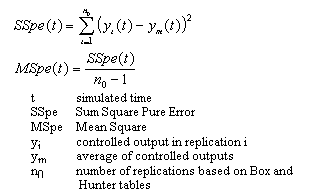During the modeling process, particular attention was focused on flexibility, taking into account a probable redesign phase, which is needed to optimize production scheduling.
After having designed the model and verified its internal logic, an analog check was performed by comparing the set of data supplied by the simulator, for an operating situation similar to the plant in question, using historical data. Thus, it was possible to make fine adjustments to the variables regarding the frequency of the order by lots and the effect of work stoppages. In fact, for some types of faults and lots, the historical data was more limited and therefore adjustments of these types to values within the previously identified range, by means of data acquisition, led to a perfect fit between simulator and the real system.
The third and most critical verification phase concerns the evaluation of the internal experimental error of the tool produced. This analysis is based on the Mean Square pure error (MSpe) evaluation technique developed by the author and his research team.
This is a study of the Mean Square Error due exclusively to the internal stochasticity of the model and for this reason is defined as pure error.
It is calculated based on the following formula:

The MSpe time evolution can be used to accurately identify the settling time of the experimental error and, at the same time, to define the obtainable precision level and the running time needed to obtain such a level.
For the specific case, the experimental error was rather limited and by means of an analysis of the MSpe Evolution it was possible to identify the time required to obtain good results for each simulation run; this time corresponded to about 3 months of simulation.